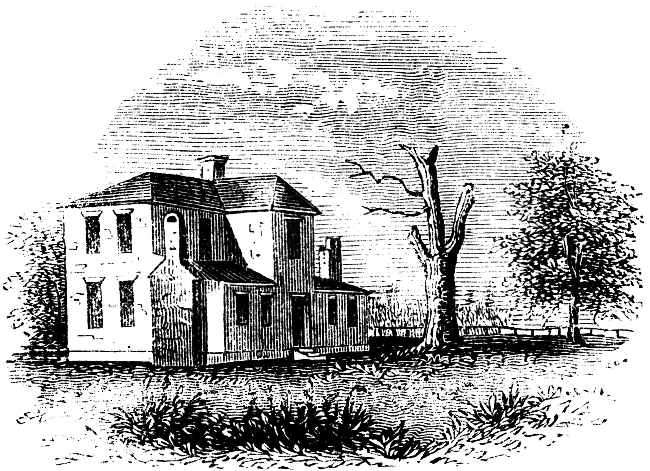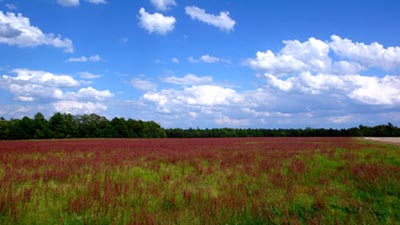Mount Joseph Plantation – Fort Motte – Calhoun County
Basic Information
- Location – Congaree River, Fort Motte, St. Matthews Parish, Calhoun County
Original plantation lands were located off Lang Syne Road in the vicinity of Wise Road and Moye Lane.
- Origin of name – ?
- Other names – ?
- Current status – ?
Timeline
- ? – Earliest known date of existence
- 1772 – Miles Brewton, owner of eight slave ships and the largest slave dealer in South Carolina, purchased Mount Joseph from Benjamin Farrar on July 11 for 2,500 pounds. The deed specifies the acquisition of all gardens, orchards, fences, ways, water courses, and wells on the property, but no house. It is probable that the plantation was run in absentia. This theory is reinforced by the fact that Brewton's will bequeathes only his "stock of cattle, horses, & other stock and plantation tools and utensils at my Mount Joseph Plantation on the Congaree River." Again, no home is mentioned (6, pp. 13-14).
The deed also indicates that Mount Joseph encompassed 1,000 acres at that time. Four hundred acres were located on the south side of the river and had previously been part of land granted to Job Marion, likely the brother of General Francis Marion. There were an additional 600 acres of swampland (6, p. 14).
Sometime after his purchase, Brewton added another 300 acres to Mount Joseph (6, p. 14).
- 1775 – Brewton, along with his wife and children, perished at sea en route to Philidephia. His sister, Rebecca Brewton Motte, inherited Mount Joseph along with his many other properties. Motte's husband Jacob also died, in 1780, making her one of the wealthiest land owners in America (6, p. 13).
- Prior to 1780 – At some point prior to June 1780, Rebecca Motte likely constructed a two-to-three story I-house atop Buckhead Hill (elevation 245 feet) at Mount Joseph. There was also at that time a building that has been variously described – by her contemporaries – as an "overseer" house," a "farm house," and an "old log cabin." It is to this building that Motte and her family would retreat when her home was overtaken by British officers (6, p. 14).
- 1780 – The British had commandeered nearby Belleville Plantation by June, but they subsequently moved their headquarters to Mount Joseph (6, p. 15).
- 1781 – By late January, the British began fortifying Mount Joseph. The home was converted to a "fort" by digging a trench around the perimeter, using the dirt to build a mound, and adding an array of sharpened tree trunks and limbs to slow the advancing enemy (3, pp. 16-17). Motte and her family were allowed to stay in place until May 6, when British forces requested they relocate to the building described above, which was located on a hill north of the manse. Motte invited Colonel Henry Lee to use this building as his headquarters (6, p. 24).
General Francis Marion and Lee attacked the British at the plantation. The battle lasted from May 8-12, and was known as the Battle of Fort Motte (1).
Both sides were fairly evenly matched, though the Americans had recently acquired artillery at Fort Watson. As Marion and Lee advanced, Marion offered British commanding officer Lieutenant -- McPherson a chance to surrender. McPherson declined, and soon after word was received that Lord Rawdon had fled Camden and was en route to McPherson's aide. Realizing they must gain the fort within 24 hours, a decision was made to burn the fort and thus force surrender (6, pp. 24-26).
In his memoir, Lee recounts Motte's response to this news as follows:
"With a smile of complacency this exemplary lady listened to the embarrassed officer, and gave instant relief to his agitated feelings, by declaring, that she was gratified with the opportunity of contributing to the good of her country, and that she should view the approaching scene with delight. Shortly after, seeing accidentally the bow and arrows which had been prepared, she sent for the lieutenant-colonel, and presenting him with a bow and its apparatus imported from India, she requested his substitution of these, as probably better adapted for the object than those we had provided" (7, p. 347).
Some contention surrounds this story, however, as an eye witness, William Dobein James, claims that the house was actually set afire by a private named Nathan Savage, who launched a rag soaked in "rosin and brimstone" at the roof. That said, the feat of launching such a missile from the depths of the American trench seems unlikely, and multiple other eye-witness accounts state the home was ignited by arrows, possibly fired from a musket (6, p. 25).
In duress, McPherson surrendered and the fire was extinguished. Motte then famously served dinner to both American and British officers at her farmhouse later that day.
In total, two Americans were killed in battle and three British were hanged from Motte's gatepost the next day (a fourth, Levi Smith, was pardoned by Marion) (6, pp. 28-29).
After the battle, 20 slaves owned by Motte's neighbor, Governor William Bull, were tasked with dismantling the palisade and filling the ditch. The level of damage endured by the house is unclear. Benjamin Lossing, who visited the plantation nearly 70 years later, states that the house was "desolated by fire" and that Motte had in turn built a new mansion. On the other hand, Motte is known to have resided at Mount Joseph until at least November of 1781, although she could have remained in the smaller building (6, p. 34).
- ? – Motte sold Mount Joseph after the war and a new home was built by William H. Love. This home stood at almost precisely the same location as the original and may in fact have retained a portion of Motte's mansion. The new home, however, was markedly different in shape, with the former likely being large and square and the latter likely being narrow and rectangular. Love's home was occupied for another 75 years, until the time of the Civil War (6, pp. 9, 34).
- 1909 – The Daughters of the American Revolution placed a marker on the site of Motte's mansion and the British fort, though the marker has subsequently been repositioned (6, p. 1).
- 2004 – Archeologists from SCIAA and the University of South Carolina conducted a dig at the Fort Motte site. They were able to locate some of the foundation of the home and the ditch around it. Artifacts gathered included musket balls from British, French, and American weapons. The team also found canister rounds indicating that cannons were used during the battle (3, pp. 16-18).
Land
Slaves
- Number of slaves – ?
References & Resources
- Painting of Mrs. Motte Directing Generals Marion and Lee to Burn Her Mansion to Dislodge the British
- The Battle of Fort Motte
- History and Archeaology at Fort Motte - PDF - p. 15-19
- National Register of Historic Places - Fort Motte Battle Site
– Photographs, architectural overview
- Daniel Marchant Culler, Orangeburgh District, 1768-1868: History and Records
(Spartanburg, SC: The Reprint Company, 1995), p. 594
 Order Orangeburgh District, 1768-1868: History and Records
Order Orangeburgh District, 1768-1868: History and Records
- Obstinate and Strong: The History and Archaeology of the Siege of Fort Motte - PDF - University of South Carolina Scholar Commons publication
- Henry Lee, The Revolutionary War Memoirs Of General Henry Lee
(New York, NY: Da Capo Press, Inc, 1998; Reprint)




